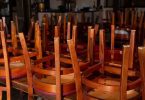Queensland: Australia’s new wine frontier
Until recently, there was a widespread belief that decent wine couldn’t be produced in Australia’s Queensland. Too hot, they said, too near the tropics, you’d have two harvests a year and the vines couldn’t stand it. The wine would be awful. Well, Queensland has spent the last 10 years working to confound the sceptics.
It has spent 80 million dollars on its wine industry, raising the level of quality plantings to around 1,500 hectares and increasing the value of its wine exports to over $40m. Virtually all plantings are in the south east corner of the state, where the climate is most favourable and, because most of the estates are under three hours drive from Brisbane, cellar door sales and wine tourism are important. However, as quantities have increased, there’s growing interest in exports and last year the wines were sold in 16 counties.
Top area is Granite Belt, south of Brisbane, at around 800 hectares, followed by South Burnett, to the north west of the city. However, because local sales are still so important, many of the estates have wineries and cellar door operations in the area of Mt Tamborine, close to the holiday mecca of the Gold Coast. That’s where I headed, during a recent holiday in Oz, in the hope of being able to capture a snapshot of the local industry in a day or two’s swoop.
The route to Mt Tamborine is extraordinarily like that which leads to Italy’s Orvieto. Everywhere where those hilly amphitheatures that you see in the best parts of Italy and I reckoned I knew exactly what kind of wines I would find when I got to the top. Crisp taut reds, zesty whites, lively sparklers- in short, all the appurtenances of a fine cool climate region. I was right on the money as it turned out, but it also turned out that few of those glorious Tamborine amphitheatres have actually been planted to quality vineyards. That may well change: with volcanic soils, altitude of around 700 metres, and spring to autumn temperatures of between 14C and 25C, it’s unlikely all those tempting sites will remain vineless forever. The main bugbear is the rainfall; it’s around 1500mm per year but a lot of that falls during the summer months, creating problems of humidity, especially on lower slopes.
Meantime, there was lots of Granite Belt wine to taste. Cabernet and merlot are widely grown. Stopping at a succession of cellar doors, I found many of the cabernets to be in very slightly green but elegant style. The merlot is generally juicier. There’s quite a lot of shiraz, with the wines having a light touch, not unlike those of Hunter Valley. The signature whites of Granite Belt are verdelho and chardonnay, with the former generally fresh and quite aromatic. Chardonnays were very balanced, tending to have alcohol levels of 12%-13% and firm citrus flavours. Some of the better concentrated ones showed very well under restrained oak treatment. The region produces some excellent sparklers, both red and white, and there’s a lot of delicious sparkling merlot and some more structured red bubblies made from petit verdot.
Quality varies, with larger, more established wineries generally more consistent across their ranges.
Little or no Queensland wine has yet been seen in Ireland but importers who like to offer intesting niche products should take a look. Long term, the area in increasing production and eventually bottles should arrive here. Informative websites include www.winediva.com, www.southburnett.com, www.wineaustralia.com, www.granitebelt.com, www.aussievineyards.com.








